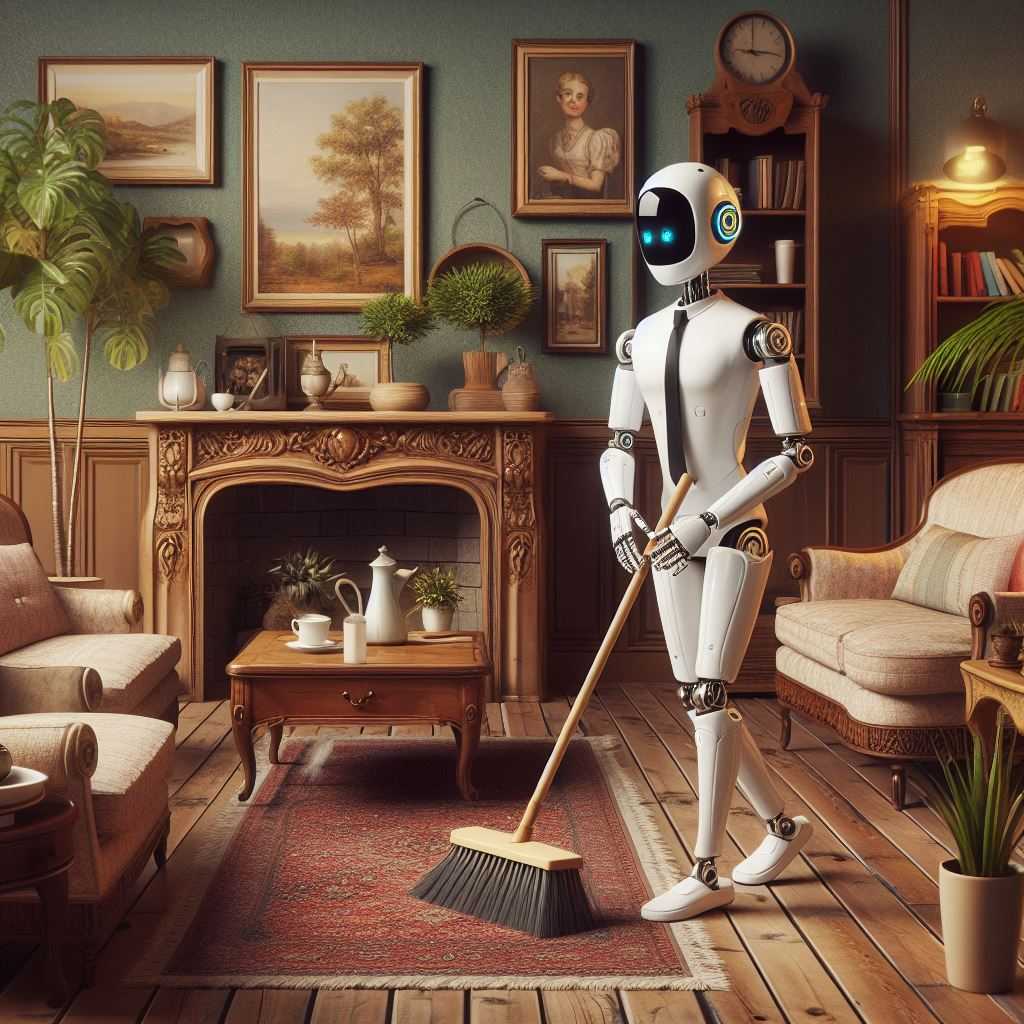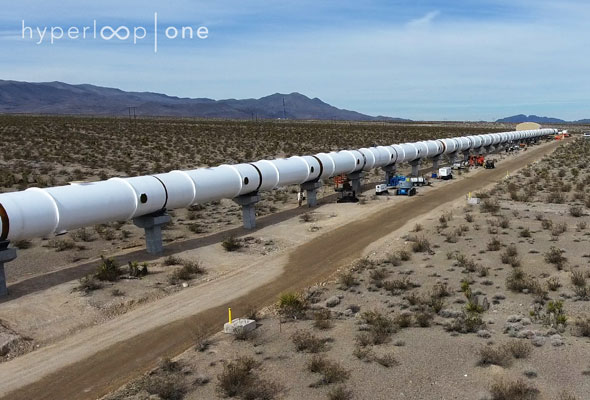The evolution of humanoid robots has been a remarkable journey since the debut of Elektro in the 1930s. These robots, designed to emulate human appearance and behavior, have advanced significantly, now featuring human-like dexterity and the ability to express emotions through facial movements. Modern humanoid robots, like Sophia from Hanson Robotics and Pepper from SoftBank Robotics, have become more and more integrated into our daily lives thanks to their interactive abilities. They have not only attained a lifelike presence but also possess sophisticated artificial intelligence.
AI-equipped humanoid robots resemble humans in appearance. They do not have to speak with us all the time. Social robots are informative, helpful, and can be friends. They can have a non-human appearance.
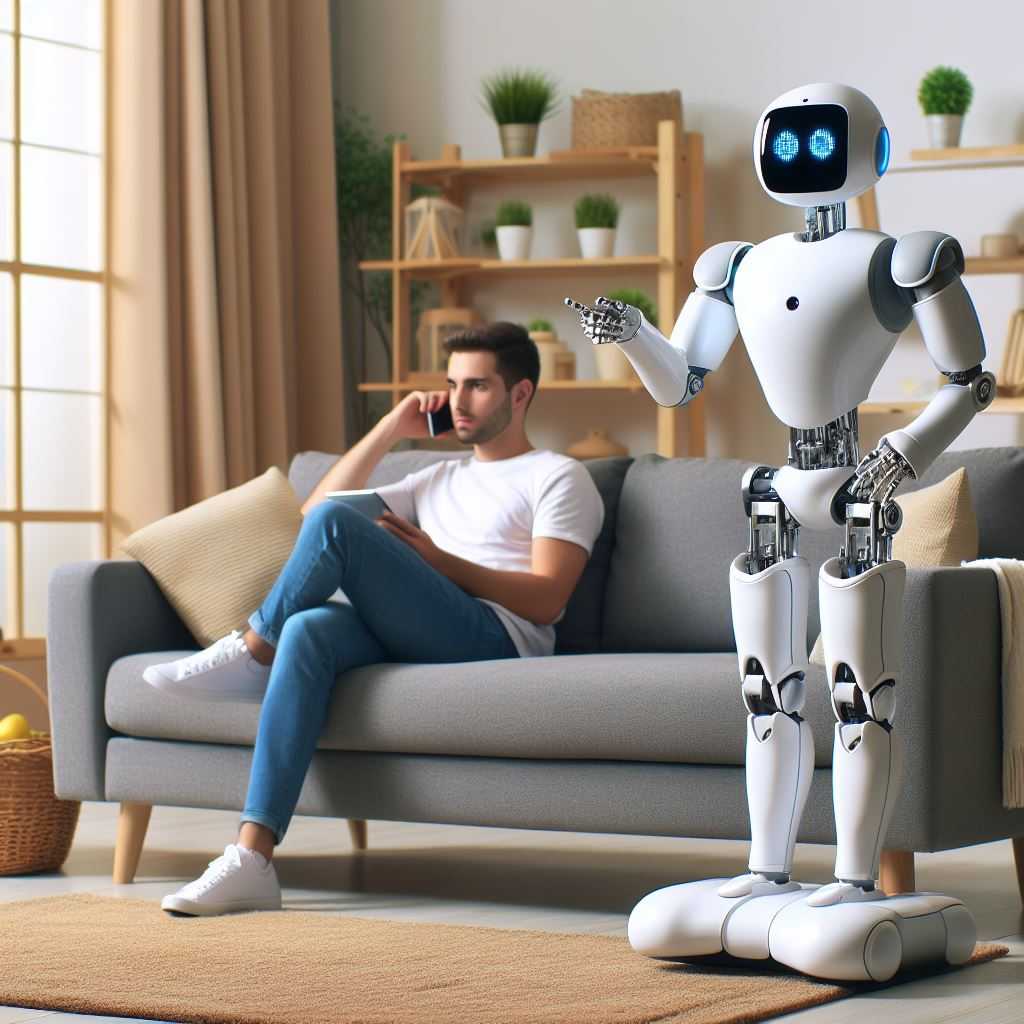
Here are some humanoid robots:
- Ocean One is a robot with two arms made to check out coral reefs underwater. It can go deeper than most people can. It uses robotics, touch feedback, and AI.
- Boston Dynamics creates ATLAS for search and rescue operations. It can walk over hard ground and around things in its way. It uses sensors to see and feel its way.
- Pepper is a robot that understands feelings like happiness or anger. SoftBank Robotics provided the voice, and it has a casual conversational tone. can read voices and faces to determine your emotions and reactions.
These robots look a bit like us and are important for what they do now and what they will do later.
Are humanoid robots dangerous?
A 1919 film featured the first movie robot. Since then, robots in movies have been smart and varied. Real-life robots are changing industries like hotels, just as computers did before.
Robots can multitask and are excellent at routine tasks. Their linguistic abilities are also getting better.
Like any high-tech tool, AI-humanoid robots can be dangerous if not used with caution. The following are some risks they could pose:
- Physical harm: If they malfunction or are misused, they could injure humans or animals. For example, a robot designed for a factory might be harmful in a conflict.
- Job loss: If these robots take over, people may lose their jobs, which would have an impact on society and the economy.
- Security and privacy: They have cameras and sensors that could gather personal information, raising concerns about public safety.
- Bias: They may exacerbate social issues if they are unfairly programmed.
- Ethical issues: As they get smarter, we need to think about who owns the things they create or if it’s right for them to replace human jobs.
Mini humanoid robots showing off their football skills

Football-playing robots have advanced; AI teaches them how to swiftly stand up, walk, and kick. Compared to robots that obey commands, they are superior.
Guy Lever of Google DeepMind used AI to train tiny robots with numerous joints for 240 hours. Similar to a brain, this AI learns from errors and patterns.
Compared to other robots, these AI-trained ones move and play more powerfully. It’s hard to make robots do this without AI, says Lever.
According to Jonathan Aitken, this research advances robotics. Ensuring robots can apply what they learn in simulations to real-world situations is a major issue that it resolves. He thinks it is a good idea for Google to train using a computer model.
However, Tuomas Haarnoja says that creating robots that can play soccer is not the main objective. Aitken continues, “The goal is to rapidly develop complex robot skills.” These skills should work well in real jobs.
Work-from-home robots
Researchers at Carnegie Mellon University made H2O, a system that lets a person control a life-sized robot using a camera. This might lead to doing manual jobs from far away.
The robot can do complex tasks that are too hard for it to do alone. It learns to move like us in real-time through trial and error. This learning doesn’t need humans to help the robot understand data.
H2O uses a camera to copy human movements. The robot can kick a ball, throw away a box, and walk with a stroller. It’s the first time a robot can copy our whole body movements in real-time.
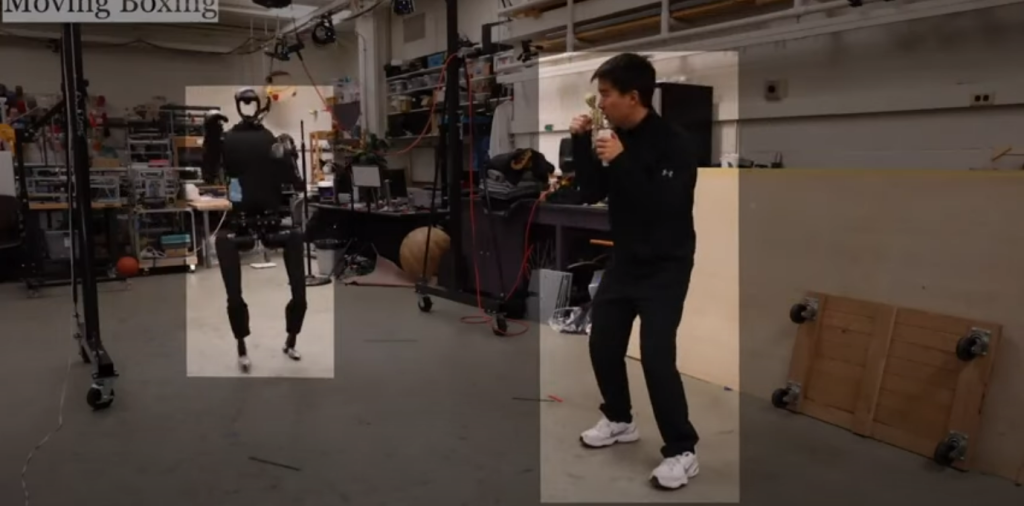
More research will add new ways to control the robot, like feeling force or understanding words. They also want to make the robot move more like us, for sports or dancing.
People are talking about whether robots like H2O could let us work from different places. They could help in dangerous jobs or places hard for people to reach.
But some worry this could lead to jobs moving overseas or robots taking over jobs completely.
Chinese Robot’s backflip
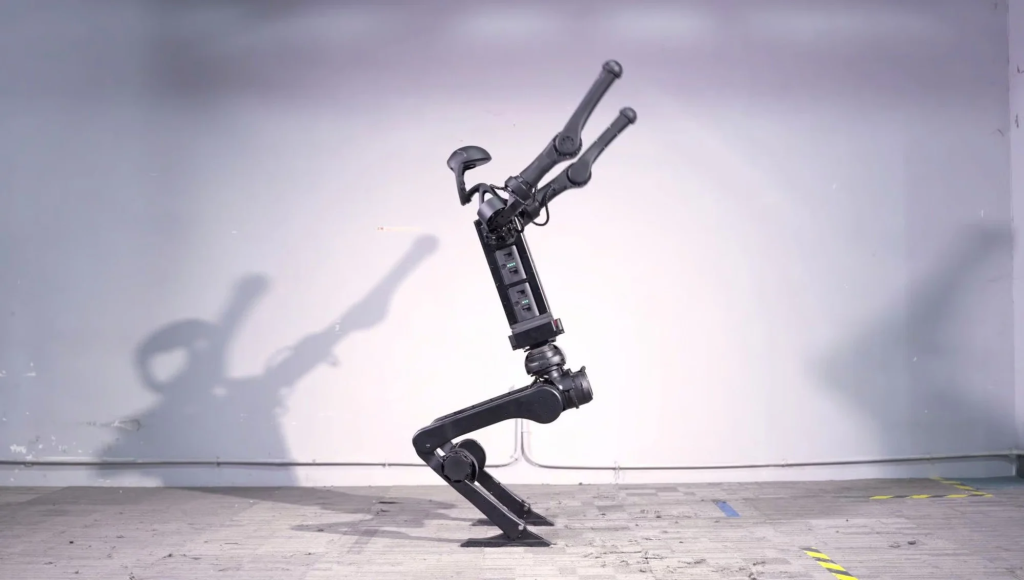
H1 builds to the backflip in Unitree’s video. Photo: Handout

A company in China showed a video of a robot doing a backflip and landing in the same place. This is a new achievement for big robots that run on electricity.
The robot, called H1, uses its arms to help it jump, flip in the air, and land smoothly. It then stands up straight again.
Unitree, the company from Hangzhou, China, made H1. They shared the video on March 20, 2024.
Doing a backflip shows how well the robot can control its body. This involves many complex technologies.
Other robots have done backflips before, like Atlas by Boston Dynamics in 2017. But H1 is different because it uses only electric motors, which are precise and give good feedback.
Electric motors are lighter and cheaper than hydraulic systems, which are powerful but heavy and hard to maintain.
H1 is taller and lighter than Atlas. It can walk on rough ground and has special cameras to see the world in detail.
Unitree says H1 is the first big, all-around robot from China that can run. It’s in its fourth version and costs less than a few hundred thousand yuan.
H1 has set records for running fast. It can also carry heavy things and stay standing if it gets kicked.
The motors in H1 are special and very strong. An expert says these robots are powerful, but we need to study them more.
Robots like H1 can be used in many areas, like helping in disasters, healthcare, making things, and entertainment.
They can work with people safely and do jobs in dangerous places or where people can’t go.
What is a general-purpose humanoid?
The term “general-purpose humanoids” can mean different things to different people. Usually, people decide what they mean by looking at them.
A general-purpose robot is one that can learn skills fast and do any job a human can. It’s hard to tell when a robot that does many things becomes one that can do anything. This change happens slowly.
I also think about how much a robot looks and acts like a person. This isn’t a must, but it’s part of what makes a robot humanoid. Our world is made for humans, so it makes sense to have robots that look and work like us.
Being able to adapt is important for walking humans. Robots have worked in factories for a long time, doing one job over and over.
Conclusion:
Humanoid robots are not a new concept, but after the invention of generative AI like Chat GPT 4 and Google Gemini, humanoid robots will become more like humans; they will be easily able to have a very good conversation with a human, help humans with their daily tasks, and be friends with older people.
The day is not far when these robots will take over many jobs because they are obedient and can follow a single rule if trained that way.
But we have to be fearful of humanoid robots, as some people with bad intentions may try to misuse this technology for their own advantage.
I think the government should make strict rules for humanoid robots and AI, as they can pose a serious threat to humanity in the future.
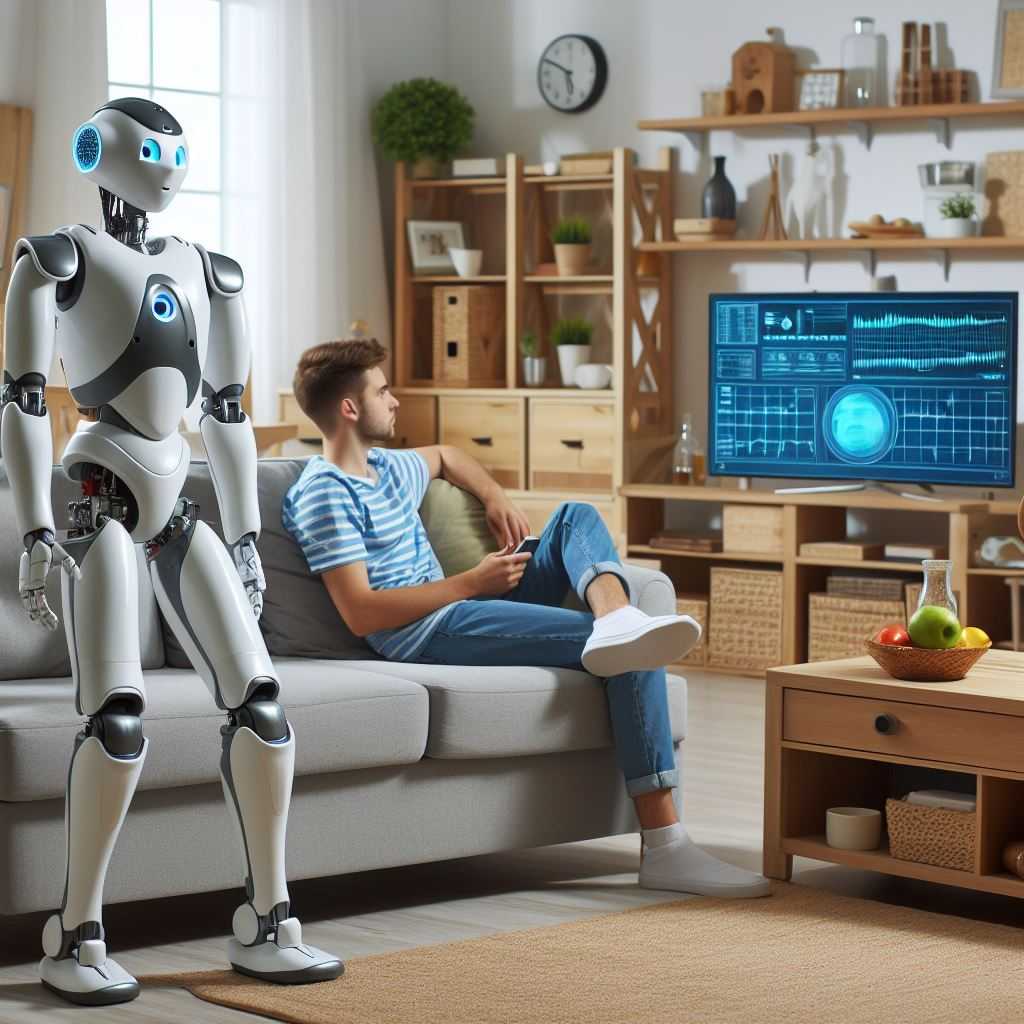
If a hacker hacks a humanoid robot and programs it for a bad purpose, our people will have a hard time chasing these robots, as they can hide anywhere because they don’t need oxygen like we do.
References:
https://www.azorobotics.com/Article.aspx?ArticleID=628
https://blog.bccresearch.com/can-humanoid-robots-really-replace-us-in-dangerous-tasks
https://www.linkedin.com/pulse/ai-powered-humanoid-robots-could-dangerous-world-elazar-avramovits
https://newatlas.com/robotics/teleoperated-humanoid-h2o
https://www.chinadaily.com.cn/a/202404/10/WS66163d57a31082fc043c1388_3.html

